We test and review fitness products based on an independent, multi-point methodology. If you use our links to purchase something, we may earn a commission. Read our disclosures.
In recent years, yoga has become wildly popular in the United States and many other Western cultures, and it isn’t just because the positions are impressive! A regular yoga practice may help to alleviate lower back pain, increase cardiovascular function, and even lessen symptoms of anxiety and depression, according to a 2011 study1 on assessing the findings of the therapeutic effects of yoga.
RELATED: Yoga Facts and Statistics You May Not Know
Even knowing this, getting started can be intimidating. How do you know you’re doing a pose correctly? How long should you hold it for? What is an asana anyway? What kind of yoga should you be practicing? Is it even working? As a yoga instructor who has taught beginners and experienced yogis alike, I know it can be intimidating to begin a yoga practice.
In this article, I’ll cover how to start doing yoga—no headstands required! By the end, I hope you’ll feel ready to establish a yoga routine of your very own, whether in your living room or a yoga studio.
What Is Yoga?
Yoga is an ancient Southeast Asian tradition stemming from Indian philosophy and religion. When discussing yoga in a fitness context, we often focus on the yoga asanas (physical postures). However, you could include pranayama (breathing techniques), Patanjali’s eight limbs of yoga philosophy, and much more. For our purposes, we’ll focus on the physical practice of yoga poses.
What Is a Yoga Practice?
A yoga practice is any kind of commitment to regularly performing yoga. Maybe it’s a few sun salutations once a week, 90 minutes of Ashtanga yoga every day, or anything in between. There’s no wrong amount of time to practice yoga! You could practice yoga by moving through a sequence of asanas (physical postures), meditating for a few minutes, or engaging with breathing exercises.
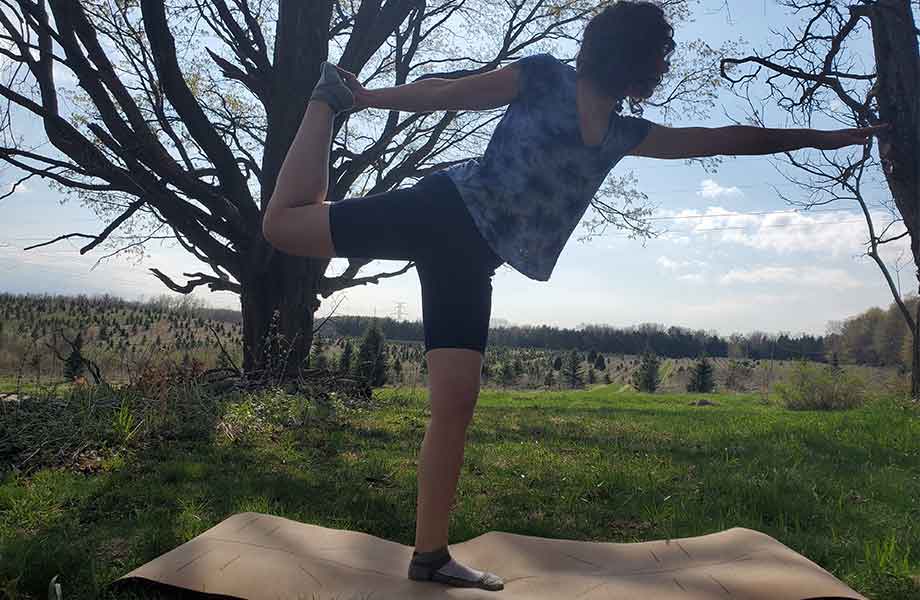
In fact, if you’ve ever taken a few deep breaths to calm down, you’ve already done yoga! Today, let’s look at how to get you started on your yoga journey by practicing physical postures.
What You’ll Need to Get Started
One of the great benefits of yoga is that you need very little specialized equipment to get started. It’s helpful to have a yoga mat to provide support and cushioning for your joints, and you may want a yoga block to help support your balancing poses. You may also consider a bolster for meditation, but the only real requirements to start practicing yoga are yourself and a few minutes to get started.
RELATED: How To Clean Your Yoga Mat
What Are the Different Types of Yoga?
Many different styles of yoga have evolved over the thousands of years of existence, and certainly, many more are still being developed! Here are some you may come across while you’re looking for types of yoga to practice:
- Hatha Yoga: One of the oldest forms of yoga, Hatha classes often focus on holding poses for several breaths. For this reason, beginners can find it helpful, as they can get a chance to learn the poses in a slower class format. But keep in mind that holding certain poses for an extended period of time can be very challenging.
- Iyengar Yoga: B.K.S. Iyengar is the name of a widely renowned and respected yoga teacher. His teachings of yoga encourage precision in alignment and specific sequencing. If you’re interested in Iyengar yoga, it might be best to learn this in a yoga studio or from yoga videos.
- Yin Yoga: Yin is a melding of yoga and ancient Chinese medicinal practices— the same ones used by acupuncturists. You can expect a lot of slow and gentle stretching in a Yin class.
- Restorative Yoga: This type of yoga focuses on relaxation. It’s a great option if you’re looking for a way to find more rest and calm in your life.
- Vinyasa Yoga: Vinyasa means “flow” in Sanskrit (an ancient Indo-European language). This form can also be called Ashtanga yoga or Power yoga. In a Vinyasa class, you can expect to match your movements with your breath and move relatively quickly through a sequence of postures.
- Hot Yoga: As the name implies, this type of yoga is done in a hot room, which can be heated anywhere from 90 to 103 degrees Fahrenheit, with varying ranges of humidity. These classes involve a vigorous power flow lasting from 60 to 90 minutes. I don’t typically recommend hot yoga classes to beginners, but if you really love heat and love to sweat, it could be a good fit for you.
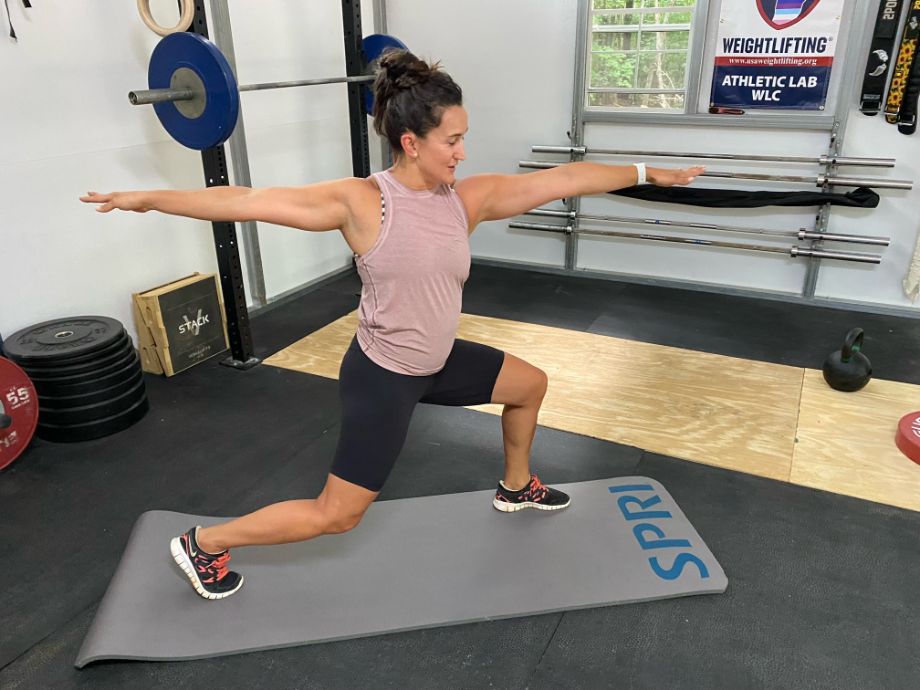
Top 5 Beginner Yoga Poses
- Downward Facing Dog
- Mountain Pose
- Tree Pose
- Child’s Pose
- Cat-Cow
Downward-Facing Dog
Benefits: The downward-facing dog pose is one of the staples of a regular yoga practice. Down dog stretches your hamstrings and calves while building strength in your shoulders, triceps, and biceps.
How to do it:
- Begin the movement on your hands and knees (tabletop position), tucking your toes beneath your ankles.
- Press into your hands and feet as you lift your hips up and back. Your body will look like an upside-down “V”.
- Allow your heels to draw energetically down (they don’t have to touch the ground!)
- Press through both hands.
- Hold for up to 10 counts/breaths.
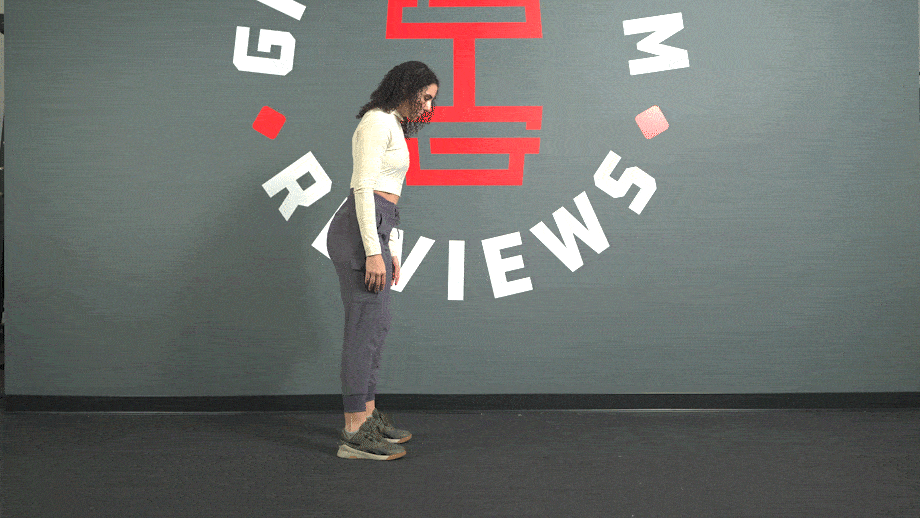
Mountain Pose
Benefits: I like to think of mountain pose as yogi for “Standing normally with excellent posture.” It’s a great pose to work on your posture and tune into your body.
How to do it:
- Stand with your feet hips-width-distance apart, pressing into the soles of both feet evenly.
- Slide your shoulder blades down your back, away from your ears.
- Imagine lifting the crown of your head up toward the ceiling.
- Hold for up to 10 counts/breaths.
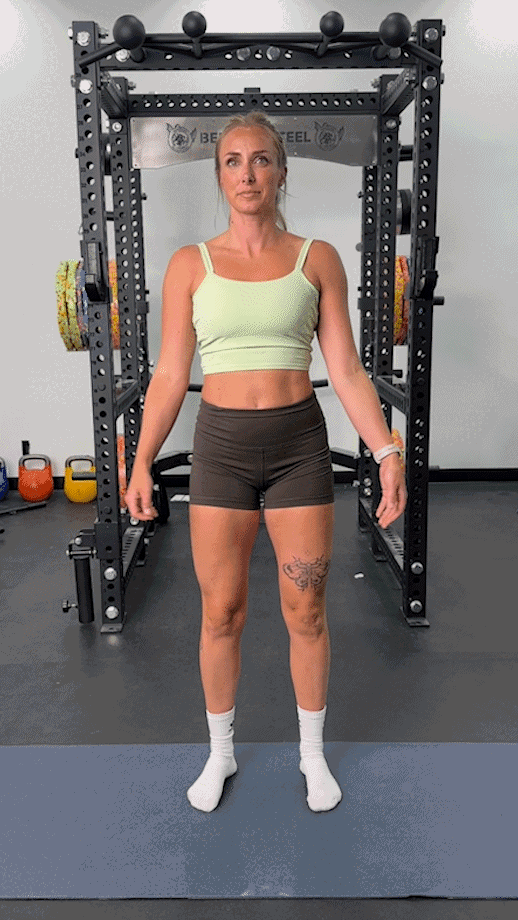
Tree Pose
Benefits: Tree pose is excellent for helping improve your overall balance and proprioception.
How to do it:
- Stand with your feet hip-width apart.
- Lift your right leg and bring the sole of your right foot to meet the inside of your left calf.
- Gently press into your left calf with the sole of your right foot and vice versa.
- Bring your palms to meet each other just in front of your sternum.
- Breathe, and hold for up to 20 counts/breaths, or as long as you can.
- Gently lower your right leg and repeat the pose on your other side.
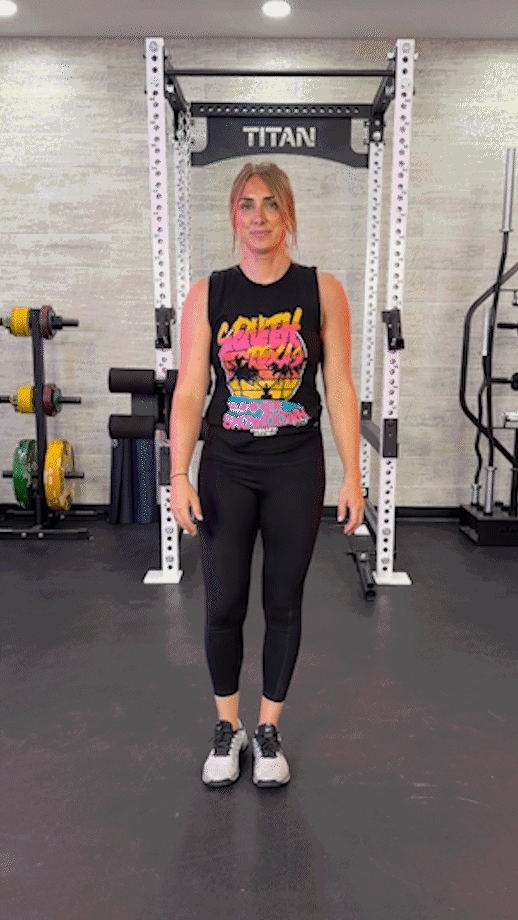
Child’s Pose
Benefits: Child’s pose can allow for a moment of introspection, help you catch your breath, or give you a nice hip stretch. As for its benefits, child’s pose stretches the outer hip muscles and shoulders.
How to do it:
- Starting on your hands and knees, let your hips fall back so they’re either above your feet or resting on your heels.
- Reach your hands forward, palms down, until your forehead meets the ground.
- Your knees can be touching underneath you, or out wide with your big toes touching behind you.
- Hold for 10 cycles of inhales and exhales.
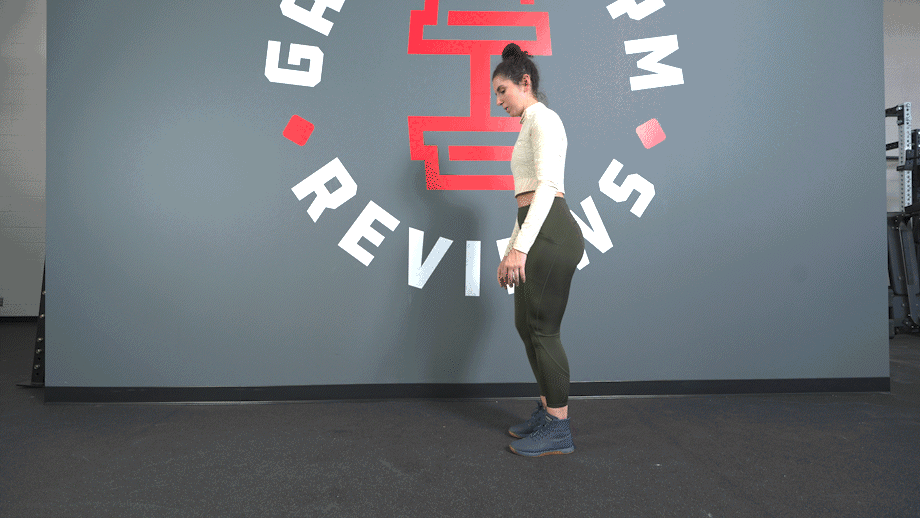
Cat-Cow
Benefits: You’re not supposed to play favorites, but cat-cow is definitely among my favorite yoga poses. It’s an incredible exercise to promote back flexibility, strength, and resilience.
How to do it:
- Start in a tabletop position: On your hands and knees with your knees below your hips and your hands beneath your elbows.
- Drop your belly down toward the ground, as you reach your tailbone and the crown of your head up toward the ceiling (cow pose).
- Press into your hands as you reach the center of your spine up towards the ceiling and the crown of your head and tailbone reach down toward the ground (cat pose).
- Repeat for 5 to 10 rounds.
RELATED: Gifts for Yoga Lover: Give the Gift of Health and Wellness
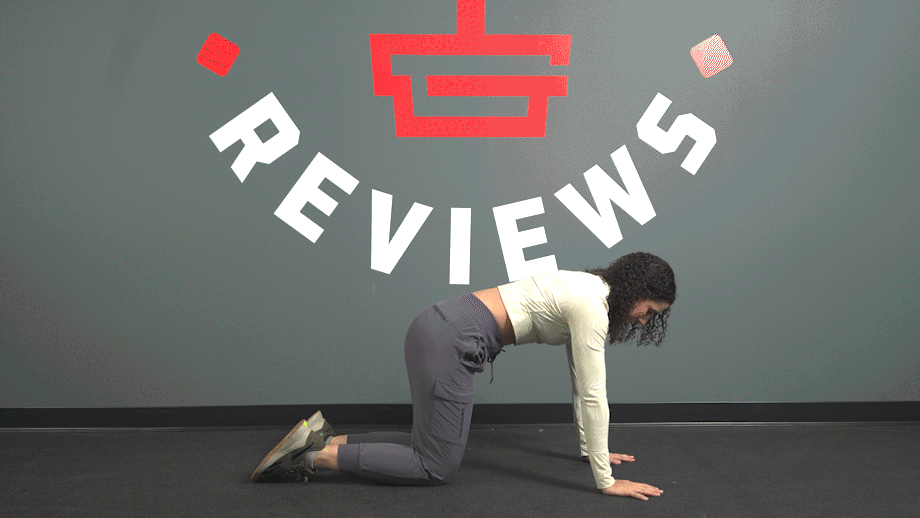
What Are the Benefits of Practicing Yoga?
The benefits of yoga are plentiful, but for our purposes, here are just a few of the ways yoga can help improve your overall well-being.
It’s Great For Your Brain Health
A 2019 Literature Review2 determined that the practice of yoga demonstrates a positive effect on the hippocampus, amygdala, and other key areas of the brain when done regularly. This means yoga may help combat the declining brain function often associated with aging.
It’s a “Take-It Anywhere” Workout
No treadmill or weights are required! Yoga can be practiced in a studio, at home, in a hotel room, or outside! A yoga practice can also be modified to suit your needs at a given moment.
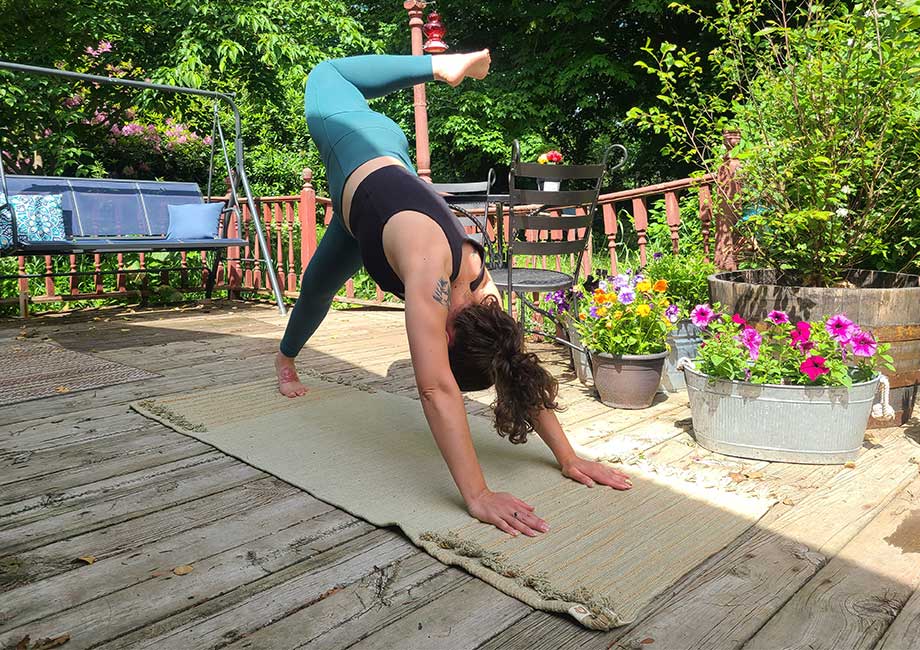
For example, when I had a sprained ankle, I couldn’t continue running for a couple of weeks, but I could adjust my yoga practice to keep myself active.
It Helps Build Better Posture
Practice makes perfect, and good posture is a huge part of a yoga practice (remember mountain pose?). Poor posture can lead to musculoskeletal pain that can become chronic. A regular physical practice like yoga can combat that and build the muscles and body awareness needed to maintain healthy posture3.
It Helps Increase Body Awareness and Balance
Many practitioners of yoga find they have an easier time noticing where their body is in space (proprioception), which leads to better balance. This can be particularly useful for preventing falls in all age groups but becomes even more important as you age.
RELATED: Down Dog App Review (2024)
How To Start Doing Yoga: Final Thoughts
The best way to start is to start! I’d recommend not taking on too much right away. Start with a quick 15- to 25-minute practice three times a week and build up from there. Here are my final tips on getting started with yoga:
- Consider taking a class. Many yoga studios have free introductory classes or a steeply discounted first week. You can also find virtual classes online.
- Practice makes practice. Starting something new can be challenging, and there isn’t one way to practice yoga. Yoga is not about seeking perfection but about noticing how your body feels in certain poses.
- Don’t skip Savasana. Savasana, or corpse pose, is often the final pose in any yoga workout. The pose is simple: lying on your back with your legs and arms lengthened and eyes closed, and it’s a necessary moment to check in with your body and notice how the asanas have affected you.
How To Start Doing Yoga: FAQs
What is the best yoga practice for beginners?
There are a lot of great options for a first-time yoga practice. If you’re interested in taking a yoga class, you might want to look for “all levels” or “introduction” in the class description. Some yoga studios even list classes as Beginner Classes or Yoga for Beginners, which will help you learn basic yoga with a yoga teacher present.
How often should you do yoga as a beginner?
My biggest concern for anyone starting a new practice is burnout. Starting three times a week with a 15- to 20-minute yoga session should be plenty to familiarize yourself with the practice. You can always add more when it feels right.
What is the first thing you learn in yoga?
Other yogis may disagree, but I think the first thing beginners should learn when starting yoga is how to breathe! This might seem silly, but when you spend so much effort focusing on what your body is doing, you often forget to breathe while you’re there, which will ultimately make the pose much harder.
Are there any side effects of starting yoga?
In addition to the many positive effects you may experience doing yoga, it’s a good idea to approach any new physical practice with caution. Specifically with yoga, if you have sensitive wrists, you may want to use wrist braces as you’re getting started. Eventually, regular yoga practice will strengthen your wrists, but there can be a lot of pressure on those joints the first few times you do it.
References
- Woodyard C. Exploring the therapeutic effects of yoga and its ability to increase quality of life. Int J Yoga. 2011 Jul;4(2):49-54. doi: 10.4103/0973-6131.85485. PMID: 22022122; PMCID: PMC3193654.
- Gothe NP, Khan I, Hayes J, Erlenbach E, Damoiseaux JS. Yoga Effects on Brain Health: A Systematic Review of the Current Literature. Brain Plast. 2019 Dec 26;5(1):105-122. doi: 10.3233/BPL-190084. PMID: 31970064; PMCID: PMC6971819.
- Kim D, Cho M, Park Y, Yang Y. Effect of an exercise program for posture correction on musculoskeletal pain. J Phys Ther Sci. 2015 Jun;27(6):1791-4. doi: 10.1589/jpts.27.1791. Epub 2015 Jun 30. PMID: 26180322; PMCID: PMC4499985.
